After analyzing the cameras behind Netflix and Oscar’s most rated creations, we definitely can explore an inclination toward DPs’ preferences. But why is that? Let’s discuss this a bit.

This is the second time that Y.M.Cinema Magazine analyses the cameras that used to shoot the major creations of the year. We have been building the statistics concerning the Academy Awards, and the giant streamer, Netflix. Last year we dealt with Sundance and Cannes as well. However, in this article, we’d like to focus on the Academy Awards and Netflix since those two reflect the cameras segmentation adequately with its whole glory. By looking at the charts, It’s hard not to notice immediately a significant inclination regarding image capture, contrary to the Golden Globe awards, for instance, that is equivalent to the Oscar in that matter.
One of the questions arises is, why don’t Oscar DPs use RED? Or why is ARRI’s popularity in Netflix significantly reduced compared to the Academy Awards? Although this is not an article regarding the never-ending debate (ARRI vs. RED), this comparison can’t be avoided in order to understand the modernization and conservation of image capture.
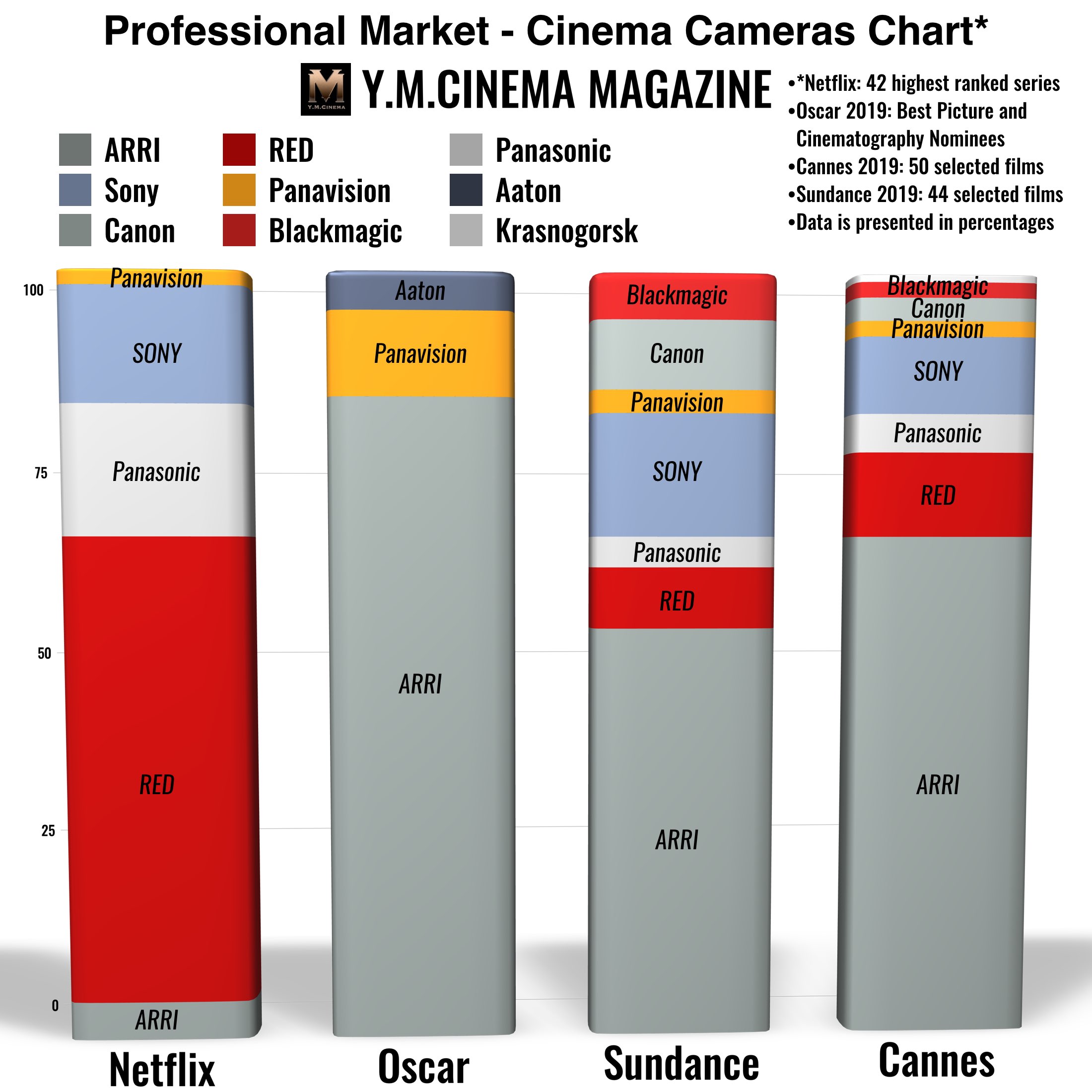
Netflix pushes the filmmaking technology boundaries
In 2020, Netflix will invest around $17.3 billion in content. For now, Netflix dominates the streaming world. It can be changed in the upcoming years due to newly born competition. However, Netflix is booming and that’s a fact. Furthermore, Netflix picked up a leading 24 Oscar nominations comparing to 15 Oscar nominations in the previous year. That means that Netflix has earned more Oscar achievements than any major studio or specialty distributor. Moreover, the streamer drives manufacturers to innovate. Ask ARRI, and they will confirm that. There is the assumption that the Mini LF was born as a consequence of Netflix’s camera and image capture requirements. ARRI is not the only one. There are other manufacturers that followed, but ARRI dominates the Oscar, and thus, it’s an excellent reference to be used. If you’d like to dive a bit deeper, refer to the Hollywood Reporter article “How Netflix Is Using Its Muscle to Push Filmmaking Technology Boundaries” by Carolyn Giardina.
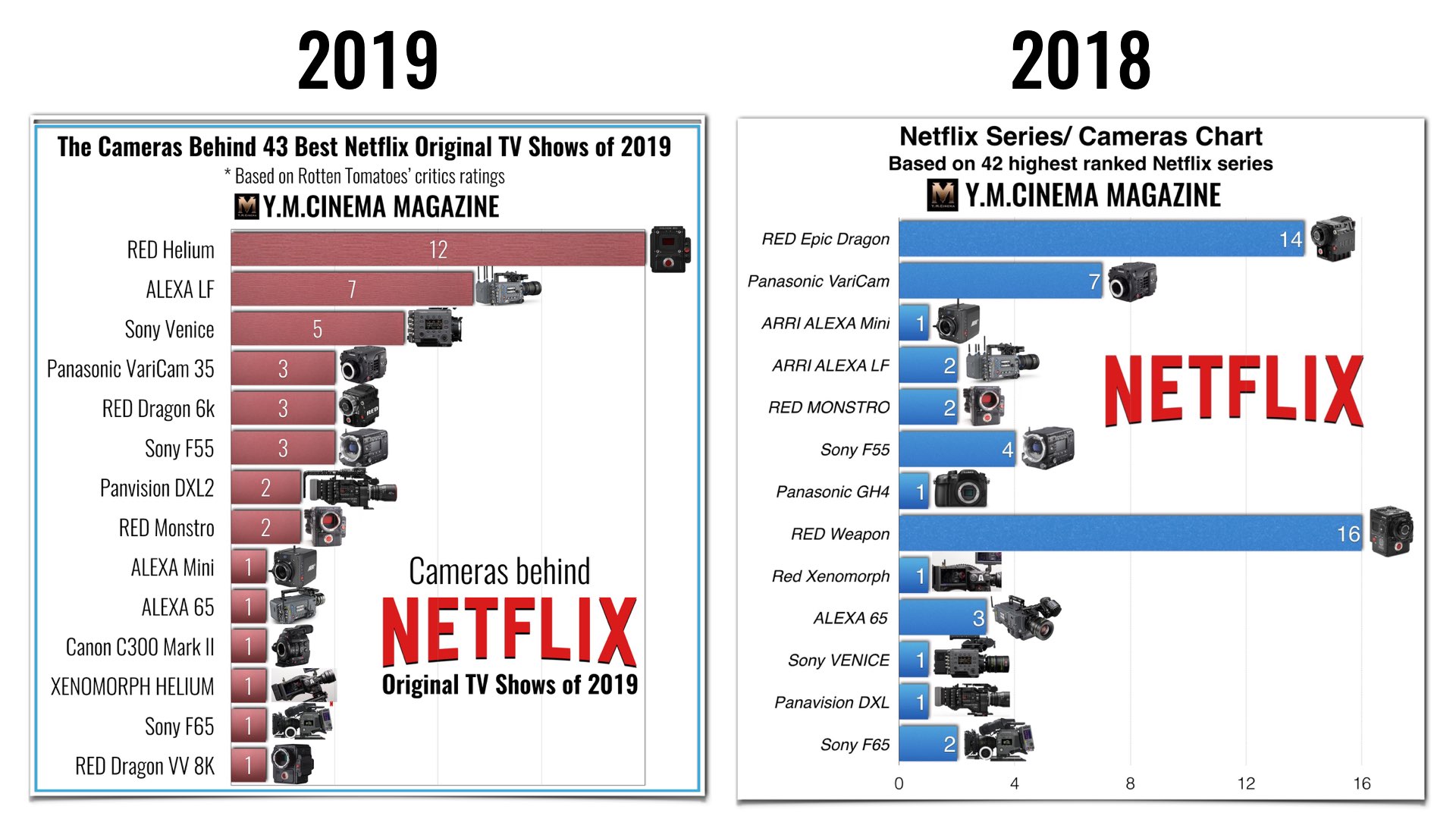
Netflix would not permit DPs to use this camera (other than the large-format Alexa 65) for its original programming because the standard model employed a 3.2K resolution sensor instead of the streamer’s required 4K
Hollywood Reporter
Netflix and RED
Today, ARRI offers three Netflix approved cameras (LF, Mini LF, and 65), compared to RED that offers 13 cameras (all DSMC2 and Rangers). Actually, RED has the largest number of cameras that meet the minimum resolution and capture the requirement of Netflix. RED brought 6K to their cameras in 2013 with the Epic Dragon. Two years later, they announced an 8K sensor to allow the privilege of flexibility in the post (and CGI). That means that RED was there from the start to meet Netflix’s requirement and desire to deliver an accurate 4K imagery to TVs. As explained above, there is an assumption that Netflix cut ARRI out of its list to force them to update their systems. Netflix answered to frustrated DPs that were eager to shoot with ALEXA that: “The ARRI Alexa and Amira are fantastic cameras, and we stream plenty of content that was captured with these cameras. However, since these cameras do not have true 4K sensors, we cannot accept them for our 4K original productions. For those who pay a premium for our UHD 4K service, we only deliver content that was shot and delivered at a true UHD 4K resolution.” In other words, Netflix sent ARRI engineers to develop an ALEXA with a 4K sensor, which they did, very well, I may say. Nevertheless, the ALEXA Mini LF was born, and the rest is history.
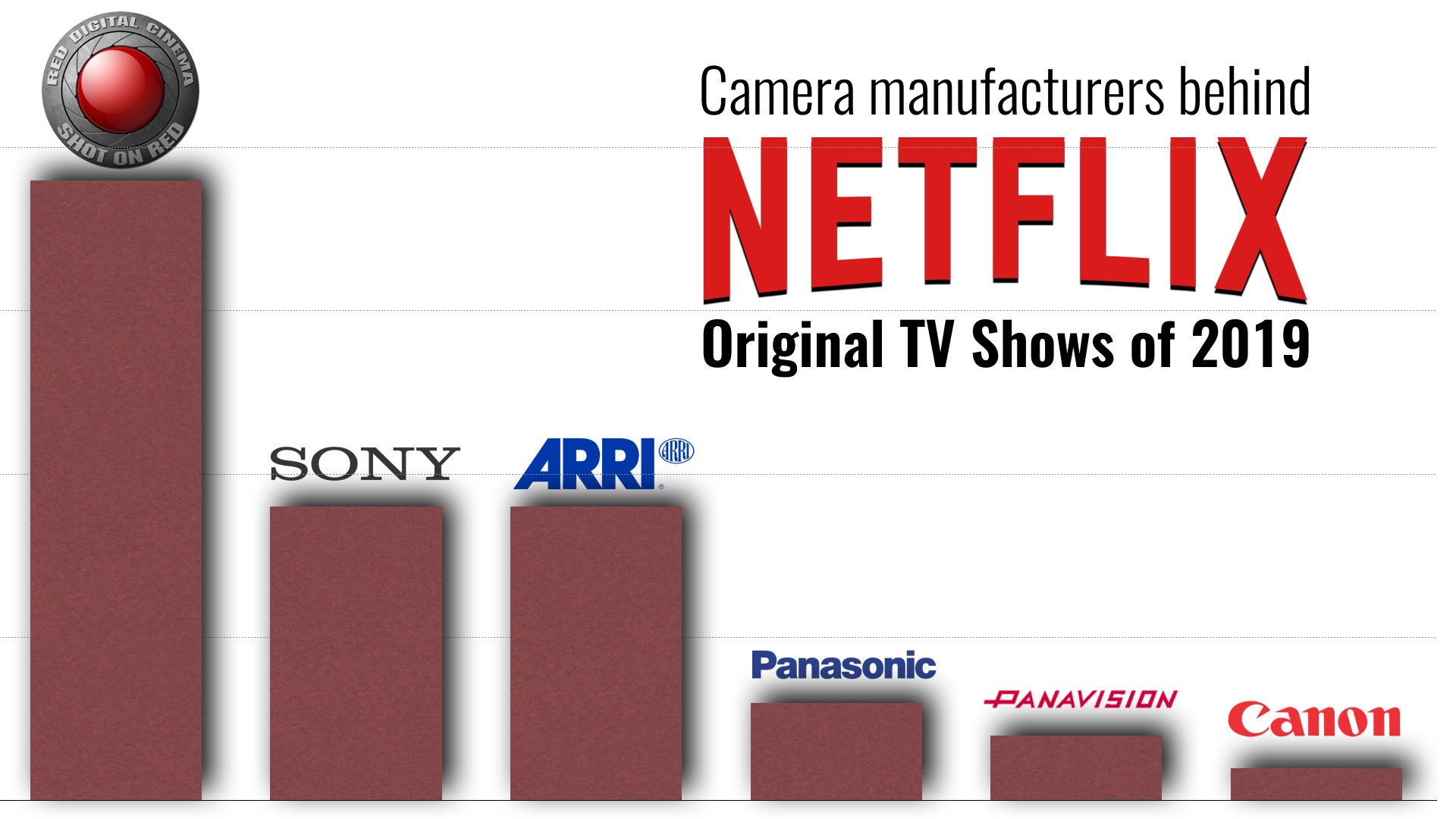
The democratization of image capture
As you can all see in the charts embedded in this article, RED is the most dominant camera manufacture in Netflix. Last year the graph was very similar to the current. Check out the slide below with compares these two charts. The presence of RED over ARRI is significantly noticeable. However, according to Jarred Land, RED president, these graphs are going to change in the next years. Let’s read what he had to say about this segmentation, which can also indicate the strategy of this fascinating camera-tech company: “People spend way too much time worrying about these charts. We will lose on almost every chart because RED is not for the normal. It is not supposed to be. If RED becomes the normal, it means we are not doing good enough… and it also means that the other companies are not doing good enough. People need to remember RED is not supposed to be the king of every mountain.. we were built to be the edge. We push the imaging ball forward, sometimes too far, and as much as the industry sometimes hates it because it is changing, it really is in everyone’s best interest. Image capture has been democratized. Professional capture needs to continuously get better, just like consumer tools just keep closing the gap.
Cinematographers that don’t care about pushing the image to the edge… that don’t give a shit about technology.. usually avoid us like the plague
Jarred Land, RED president
We did this with a resolution. We made it “normal,” And we did it with a dynamic range in small pixel size. Now we are pushing to solve the next imaging hurdle that is on our list. Cinematographers that don’t care about pushing the image to the edge… that don’t give a shit about technology.. usually avoid us like the plague. Because even though we are making it easier and easier to work at the highest resolution at the absolute highest image quality, It is still easier just to point and shoot and capture something that is just good enough, and for a lot of people, that is obviously, good enough. And that’s not wrong. There are a lot of people that would prefer to drive a Volvo over a Lamborghini because it is just easier and safer. And that is ok. It is people that expect more than usually look over the fence to the RED side. That is why we are here. I do know to say people only shoot RED because they are forced to is a bit unfair. You can see on the chart there are a dozen other cameras approved by Netflix that every cinematographer on the list had access to. Even if they normally shot their ARRI and couldn’t because the image wasn’t good enough for Netflix, They had A LOT of other options, if they wanted to. And to be fair, we lost a few shows here because some of the cameras on this list that are not RED were chosen by ARRI cinematographers that just hate RED so much that they just couldn’t bear to use one 🙂 At the end of the day, the customer has the only vote that matters. Netflix 4k mandate had nothing to do with us… We didn’t sit on their doorstep demanding it. When that mandate happened, we learned the same day everyone else did. They realized all by themselves that the customer would want it, they knew they could charge more for it, and they implemented it. If it didn’t work, if the customers didn’t care, they wouldn’t have done it and they wouldn’t continue to do it. Yes when that mandate happened, almost every other camera company jumped on top of their boxes, shouting that resolution doesn’t matter.
Netflix 4k mandate had nothing to do with us… We didn’t sit on their doorstep demanding it. When that mandate happened, we learned the same day everyone else did
Jarred land, RED president
Now today, every single cinema camera company makes cameras above 4k. Because the customers want it. Walk into Best Buy… it is getting hard to buy a 1080p tv today. Of the almost 270 models of televisions Best Buy sells, 240 of those televisions are 4k or above. It’s almost 10:1. That ratio was almost the exact opposite the day the Netflix mandate went into place. Next year this chart and that ratio will change as Arri and Sony both have new cameras that just have been added to the list. We have the Ranger and the Dragon-X just show up to the party as well. At the end of the day, the choice is good. We don’t care about winning awards , we just care about pushing the best image forward, no matter how hard and no matter how far”.
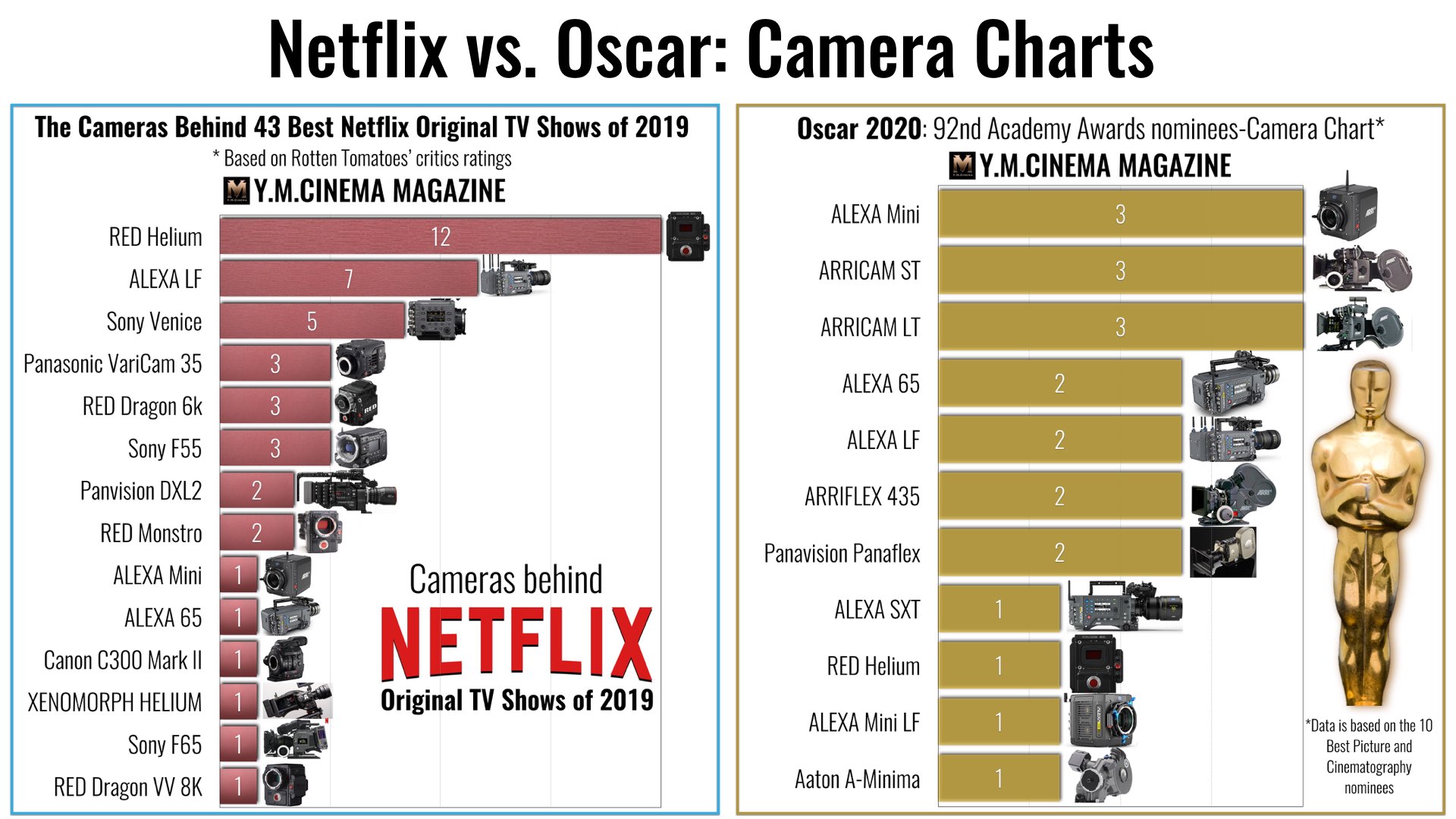
Even if they normally shot their ARRI and couldn’t because the image wasn’t good enough for Netflix, They had A LOT of other options, if they wanted to. And to be fair, we lost a few shows here because some of the cameras on this list that are not RED were chosen by ARRI cinematographers that just hate RED so much that they just couldn’t bear to use one
Jarred Land, RED president
The Academy Awards as an indication for conservative cinematography
This title might be giving the wrong idea that the Oscar nominees (Best Picture and Cinematography) are lacking in innovation. Of course, that is not true. As you can explore in the graphs, there are a decent amount of sophisticated modern cinema cameras that are utilized by top-notch DPs. However, there is a vast majority of older cameras comparing to the Netflix charts. Don’t get me wrong. Watching a movie that was shot on an “old” film camera is not a bad thing. These cameras constitute the definition of art in cinematography. They produce stunning extraordinary imagery, and they have a most respectful history of shooting great films that we all remember for eternity.
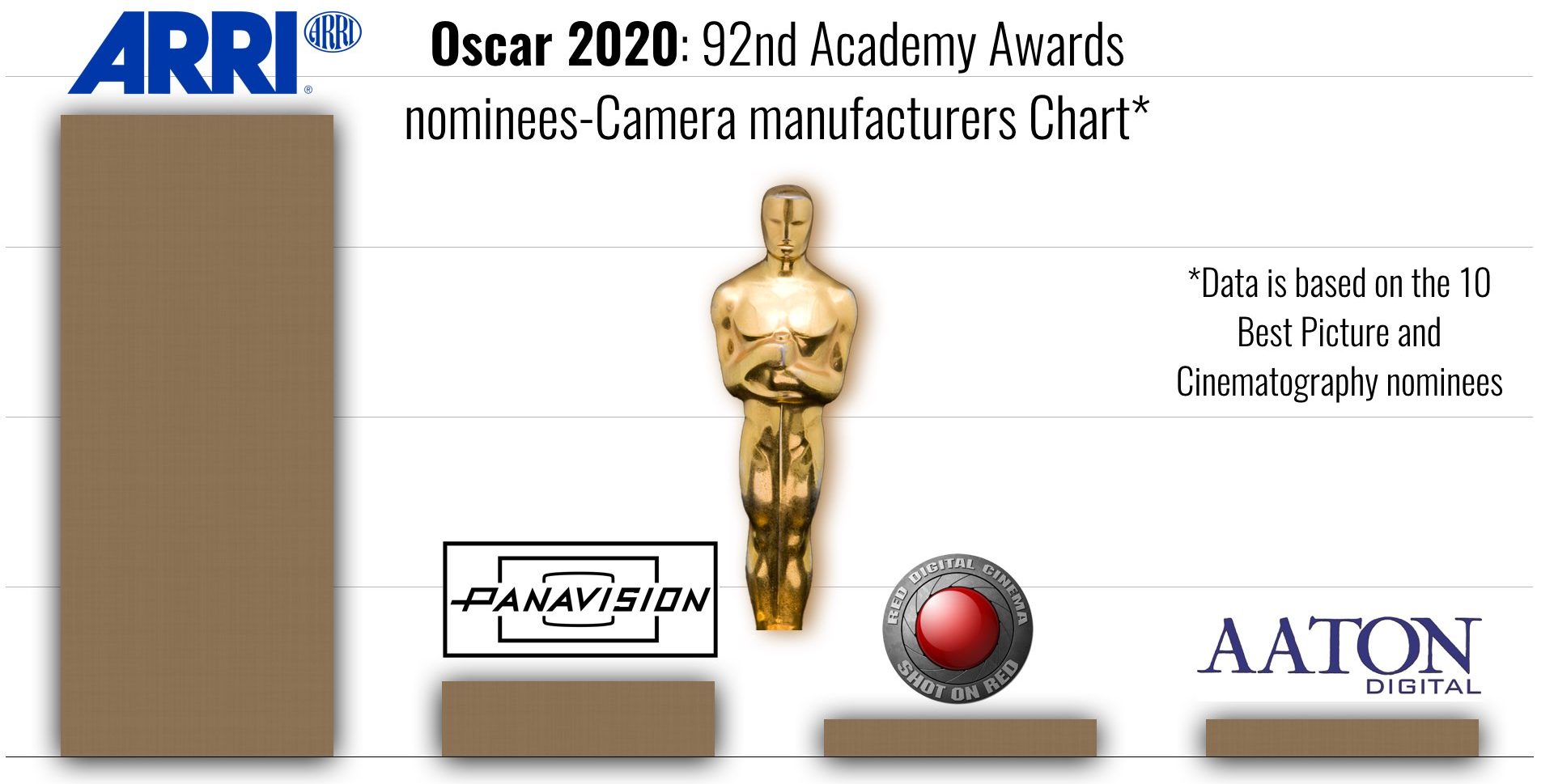
Nevertheless, it can’t be ignored from the vast presence of ARRI in that list. This chart has initiated the ultimate debate – RED vs. ARRI again. ARRI shooters claim that Oscar winner DPs choose ARRI because of reliability, picture quality (“film look” vs. “digital look”), and professionalism. RED shooters claim that ARRI influences the Academy via its connections. Although we can’t prove that, we should ask the question: Where is RED in the list of Oscar nominees (even though there is one Helium).
RED Digital Cinema and the Oscar
After a bit more research, it turns out that RED has been nominated before (Academy Awards 2011 ) with the films “The Social Network “and “Winter’s Bone,” which both of them were shot on the RED ONE. Also, there is “Room” (Academy Awards 2016) and “Lion” (Academy Awards 2017) that were shot on the RED Epic. For a fascinating case of a DP (and director) that were brave enough to choose RED, we can refer to The Social Network. David Fincher and DP Jeff Cronenweth ASC were also the first to shoot a feature with the new Mysterium X chip for the Red camera: “We chose to shoot on the RED One with the new Mysterium-X chip basically because Fincher has always been very progressive in the HD world and new technology and this chip came about exactly when we were starting production” Cronenweth said. “We decided to use the Red One MX camera with ARRI master prime lenses for The Social Network, partially because it is relatively compact and lightweight. It was the right tool for this project. We wanted the flexibility of covering scenes at practical locations without drawing attention while capturing a reality-based look composed in a 2.4:1 aspect ratio.”
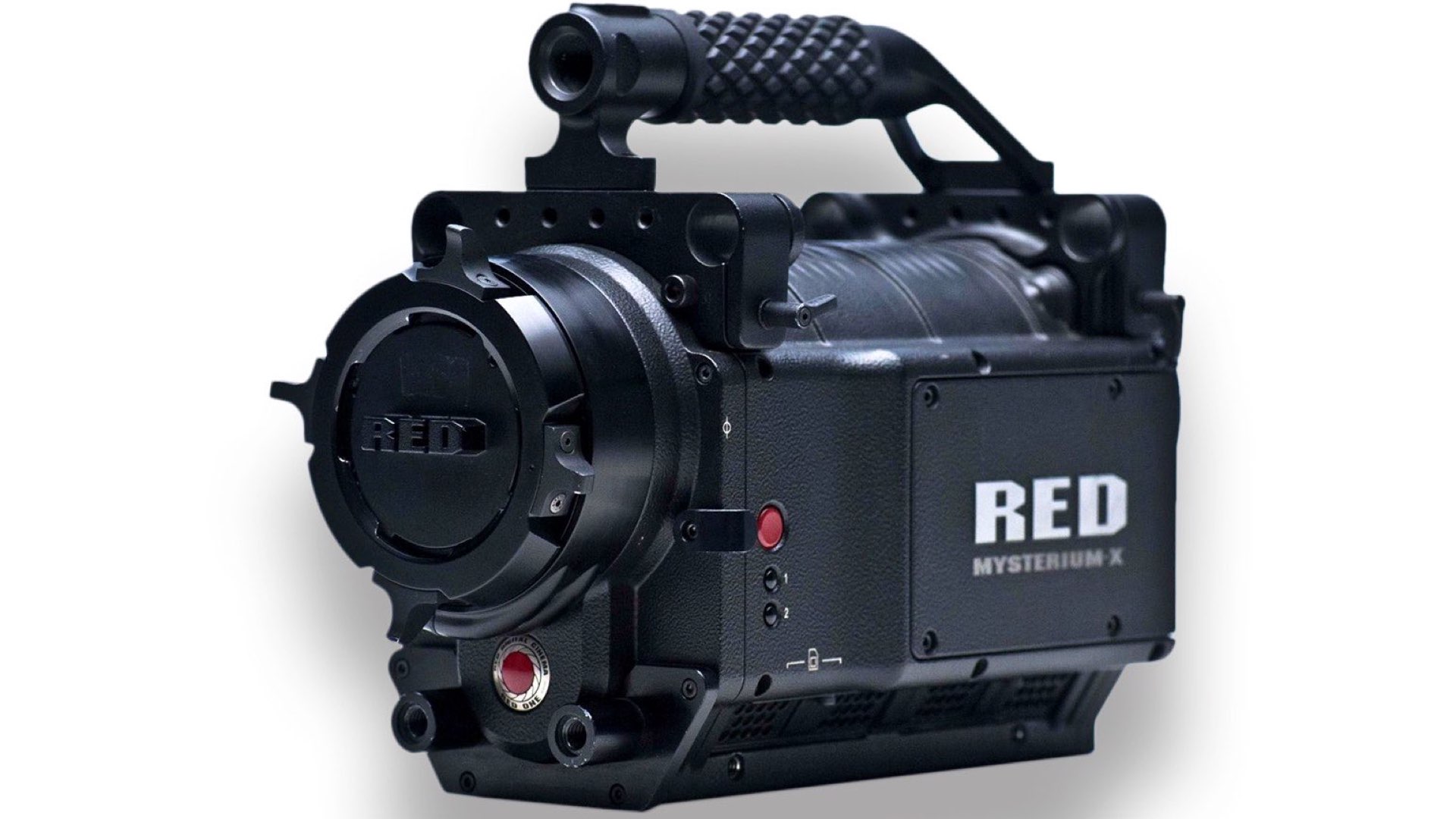
We decided to use the Red One MX camera with ARRI master prime lenses for The Social Network, partially because it is relatively compact and lightweight. It was the right tool for this project
DP Jeff Cronenweth ASC
Cronenweth and Fincher were happy with the results from the Red One MX, so they used it again for their “The Girl With The Dragon Tattoo.” There is no doubt that it took some courage for the DP and director, to take a deep dive into a new technology to be used in a $50,000,000 Hollywood production. But what is the case with other DPs? Aren’t they brave enough to shoot on RED? Are they getting influenced by ASC to shoot with ARRI?
Wrapping up
It would be interesting to reveal next year’s charts. In my opinion, there is a chance for mixed charts, which means more RED on the Oscar list, and more ARRI on Netflix. Nevertheless, I think we all agree that both cameras produce professional imagery. The question is, what would you prefer? A Lamborghini, or a Volvo?

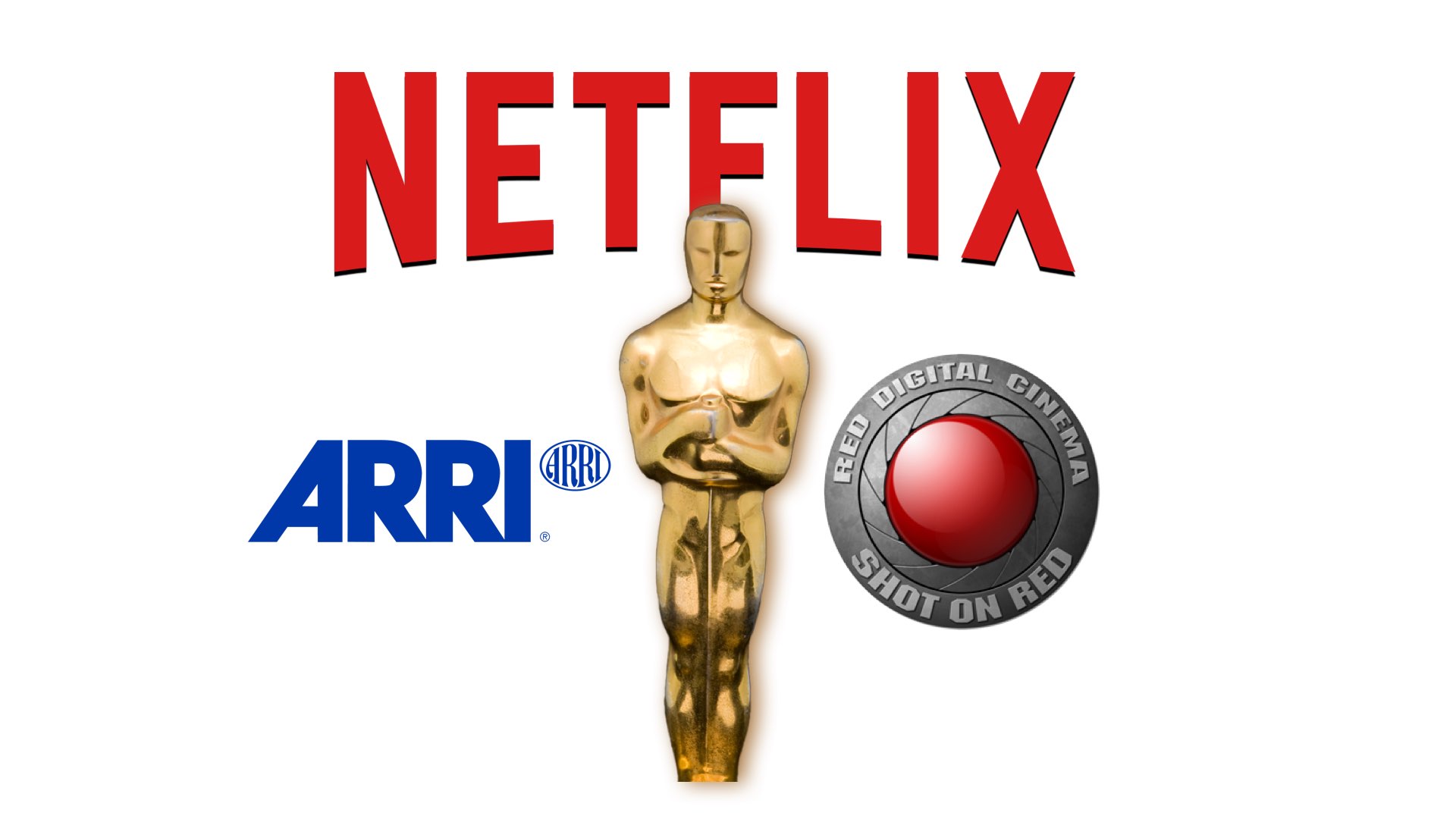




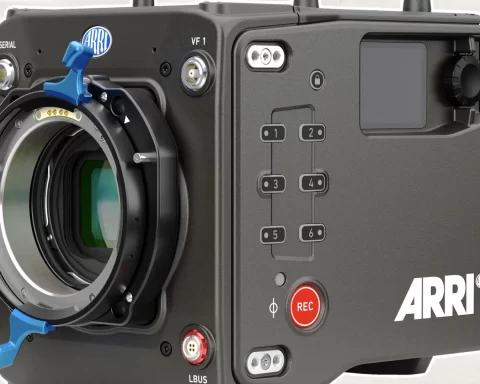

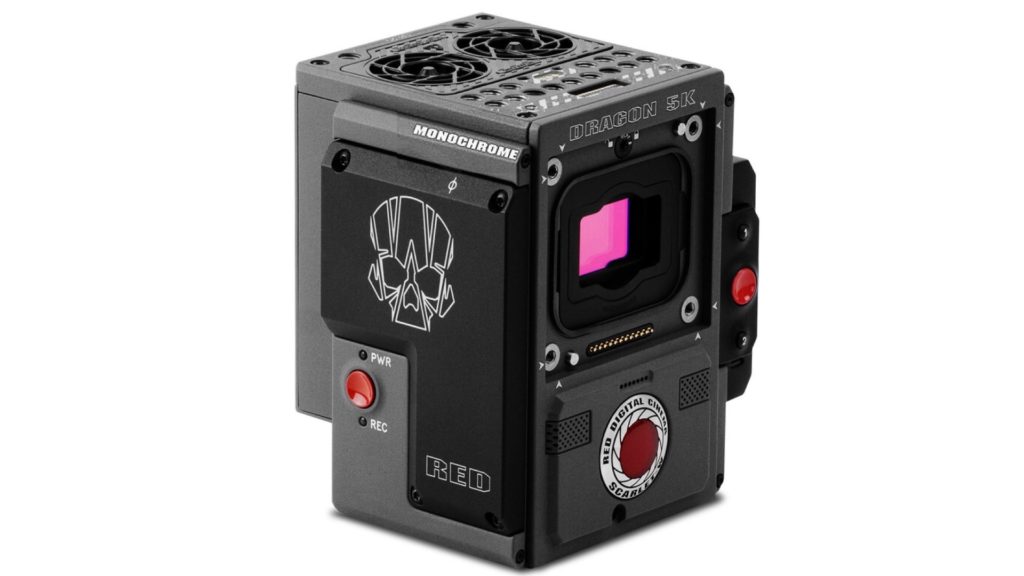
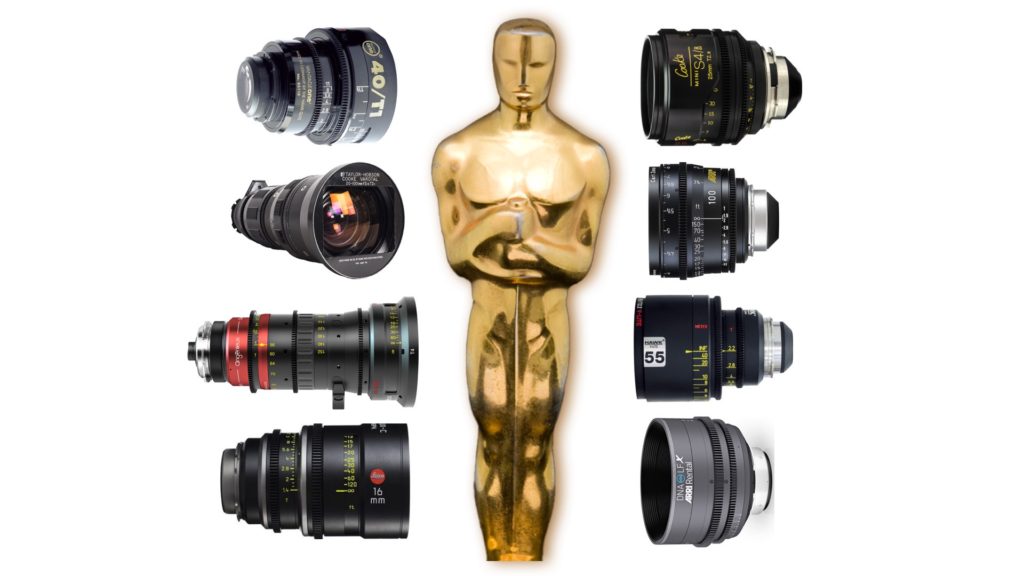





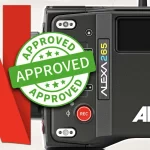
These 2 cameras are not intended for making feature films but they are near perfect documentary film cameras, ment for run and gun solo operators.